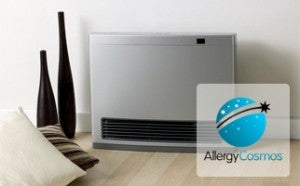Unflued gas heaters can make a significant contribution to indoor air pollution. A flue is a pipe, duct or chimney that takes exhaust gases from fireplaces, water heaters or cookers from inside a building to the outside. Unflued systems allow pollutants like nitrogen oxides to build up indoors, threatening the health of inhabitants.
According to a new study from New South Wales, Australia, unflued gas heaters can cause respiratory symptoms and impaired lung function among older people who already have mild to moderate asthma. We already know that unflued gas cookers and heaters are a major source of nitrogen dioxide and carbon monoxide. They can also produce formaldehyde, a particularly potent pollutant.
It is also well known that exposure to gas appliances or indoor nitrogen dioxide is linked to an increase in lung symptoms, including worsening asthma, in children and adults. Older people may be even more prone to the impact of both indoor and outdoor pollution. Older people tend to spend more time indoors and, as they tend to feel the cold more, may also have the heating on more.
In this study, the researchers studied a group of 71 people with asthma and had them record any daytime and nighttime symptoms for a 12 week period. They also gave morning and evening peak flow and forced expiratory volume readings – which are standard measures of lung functioning.
Thirty-three of the participants used unflued gas heaters as their main source of heating. This group was more likely to have symptoms like wheezing and breathlessness. They were also more likely to have reduced lung function. Same, and previous day, exposure to an unflued gas heater was linked to worse symptoms compared to days when heating was not used. The more hours the heater was used for, the worse the symptoms and the more impaired the lung functioning.
The researchers note that the participants in this study had only mild to moderate asthma and were reasonably mobile and active. None were confined to their homes. The implication is that the impact of unflued gas heaters and cookers on the health of the housebound is likely to be even more severe. Therefore, older people – or indeed anyone of any age – who has asthma might do well to upgrade any gas appliances to be sure they are not unduly exposing themselves to exhaust fumes. Existing appliances, flued or not, should be regularly serviced and maintained. An alternative would be to start again and switch from gas to electricity. If neither of these changes is an option then, at the very least, the windows should be opened every day to let fresh air in – and gas exhaust pollutants out.




